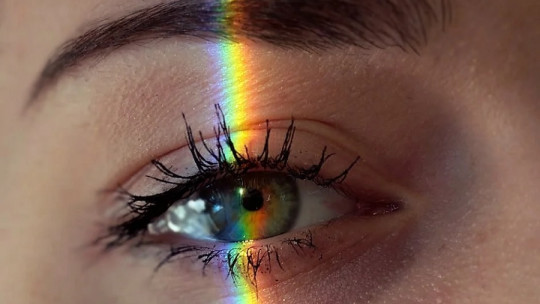
The word fetish can refer, from an anthropological perspective, to amulets and elements typical of a certain type of tribal cult or, from a psychological perspective, to the relative obsession with a certain object, especially in a sexual way.
This last definition is the one that we are going to develop further throughout this article, in addition to understanding whether or not fetishism is a psychological disorder. Let’s discover in greater depth what a fetish is
What is a fetish in Psychology?
In its most general sense, a fetish is understood as a material object of worship that is granted magical and supernatural properties, which can be venerated as an idol. These types of objects are those used in many ancient tribes and civilizations and their idolatry has been the founding pillar of many modern religions. Fetish idolatry is something universal, appearing in many different places around the world.
However, The definition that we will discuss has nothing to do with this anthropological conception of what a fetish is, but rather its more psychological definition Specifically, in the field of the psychology of sexuality, we understand a fetish as an object or part of the body that inspires some type of sexual attraction in someone, although normally that element does not have any sexual meaning in our species.
The word “fetish” comes from the Latin “facticius”, which means artificial and invented, referring to the fact that the meaning attributed to it is totally subjective, whether cultural or sexual. The word would have evolved into “feitiço”, a word used by Portuguese sailors to refer to the obsessive fascination objects of worship that they found on their voyages. That same word evolved into “fétiche” in French, from which “fetish” comes, acquiring the definition we just saw.
The sexual fetish
We have the origins of the word “fetish” used with sexual connotations in psychology in Sigmund Freud’s psychoanalytic theory It was he himself who gave the definition of abnormal sexual attraction towards an object or part of the body that has little to do with the reproductive function. Among these objects and situations without a clearly reproductive function but that activate a sexual response we would have high heels, BDSM harnesses, leather clothing, lingerie, whips, chains, feet, armpits…
A specific situation or action can also be a fetish. There are people who have a real fetish with people who smoke, dress in business clothes or walk in a certain way. The sexual interest of being tickled, tied, whipped, gagged or humiliated (BDSM practices) or urinated on (pissing) would also be within the fetish. These fetishes are more intense than those directly related to a type of object, and There are many communities of people who are looking for sexual partners with whom to practice sex
Among the objects that would not be considered sexual fetishes we would have objects intended for sexual stimulation, such as vibrators. These devices, although not “natural,” are specifically designed to awaken sexual arousal. They do it not because the person feels that they produce some type of attraction, but because, when placed on the genitals, they produce physical stimulation in that same place as if it were another person’s genitals.
Theories about fetishism
Sex arouses a lot of interest and, if we talk about sex that goes beyond the social norm, even more so. This is why it is not surprising that countless theories have been proposed to explain fetishism, in addition to debating whether or not it is a disorder. Next We will discover the two most relevant theories about this type of sexual behavior
Psychoanalytic theory
Freud was one of the first psychologists to psychologically address sexual fetishism. In his case, he was talking about a sexual behavior that was activated by the presence of an object or element that, in principle, should not have objectively speaking sexual meaning, but that the fetishist attributed one to.
For psychoanalysis, the fetish is a perverse manifestation, considering it the core and common place of all other paraphilias.
According to this current, fetishism is the way in which the problems that the subject has with social norms are manifested, especially when these norms are very strict. This can be related to the time that Freud lived, since at the end of the 19th century (Victorian Era) there was a lot of sexual repression.
This repression meant that people had almost no sexual freedom, causing the most murky and unspeakable fantasies to develop in their most intimate depths. The greater the sexual repression, the more intense the fetishism would be. It is at this time that people begin to talk about behaviors such as voyeurism, sadomasochism or transvestism.
For other psychoanalysts, such as Piera Aulagnier, fetishism would be a border state between neurosis and psychosis. Once this barrier is overcome, the individual would enter directly into the world of psychosis and, therefore, hallucinatory psychopathology, such as schizophrenia.
Conditioning theory
Psychoanalysis is very interesting but it has already lost a lot of weight in the scientific field. For this reason, it has been necessary to propose other theories that would explain the reason for the existence of fetishism, and among them we have behavioral proposals, in addition to those supported by classic figures such as the psychiatrist Richard von Krafft-Ebing or the psychologist Alfred Binet.
The conditioning theory explains that fetishism is the result of conditioning during the childhood of the fetishist. The origin of their sexual fixation towards an object or part of the body would be due to a casual circumstance that occurred during the process of learning and sexual self-knowledge. When the fetish object and sexual exploration coincide, the person would associate pleasure with that object
This relationship would establish itself until reaching adulthood, transformed into a very strong sexual interest towards the object and becoming an important element during intercourse or any sexual relationship. If the fetish is not present during intercourse, it is quite likely that the sexual response will not occur.
Fetishism, good or bad?
A widespread debate is whether sexual fetishism is a good or bad thing, that is, whether or not it implies a psychopathological disorder. As with any other paraphilia, fetishism is not considered a disorder or psychological problem as long as it does not harm other people or imply cognitive, social, occupational and emotional deterioration in the person.
Traditionally, fetishism has been seen as a disorder, understood as the abnormal sexual attraction towards a certain object or element. The logic behind this idea is that since it deviates from the norm it must, by necessity, be pathological However, this idea has been overcome and, in fact, it is considered normal for people to have some type of fetishism. Anyone can have a certain degree of fetish arousal, outside of what would be considered “normal” sex, without having a fetish disorder.
Having a fetish is nothing strange or extravagant, and it is something that should not embarrass anyone according to experts, nor should it be kept hidden from a couple. In fact, fetishes, done well, allow you to escape the monotony of sex. Performing the same sexual practices over and over again with your partner can end up wearing them down, something that, in the long run, could even kill them. Complying with these types of small perversions is necessary for the couple to feel satisfied.
fetishism It will be considered a disorder if the person is completely dependent on their fetish to have a sexual response For example, a person who has a fetish with high heels, if he is only excited by the presence of this type of footwear without paying attention to the person wearing them, has a problem. Only being able to have sex while having the object in question nearby greatly limits the sexual experience, making the person need very specific conditions to be able to become aroused.








